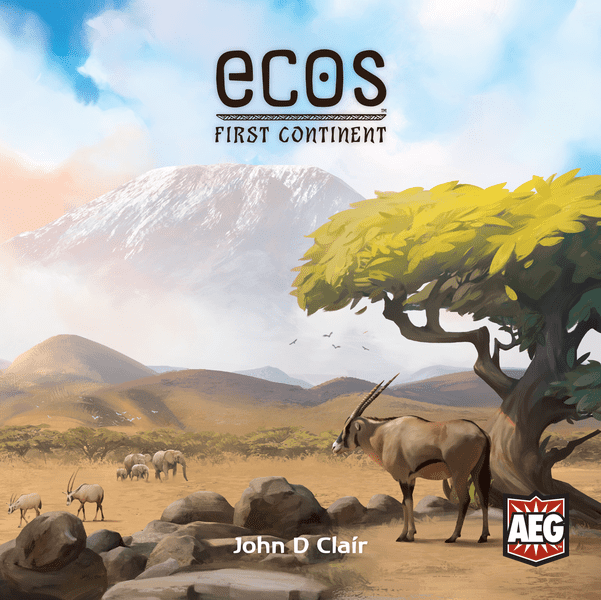Ecos: First Continent (2019) Board Game
Ecos: First Continent is a board game designed by John D. Clair and published by Alderac Entertainment Group in in 2019. The game is set in a prehistoric world where players work together to shape the continent, create habitats for various animals, and earn points through strategic gameplay.
Game Components of Ecos: First Continent
– 6 Dial tokens
– 75 Map Tiles
– 15 Mountain Tokens
– 25 Forest Tokens
– 66 Energy Cubes and storage container
– 6 Scoring Cubes
– 1 Scoreboard
– 105 Game Cards
– 102 Animal tokens and 2 storage containers
– 40 Element stones
– 1 Element bag
– 1 Rulebook
How To Setup Ecos: First Continent
To set up the game, start by placing the land tiles in a starting configuration, which can be the default setup or one of the alternate configurations like River, Coastal, or Islands. Each player receives a dial token, 7 energy cubes, and a starting deck of cards, selecting three cards to lay out in front of them. The element tokens are placed in the element bag, and the score board is set up with score markers on the left side. Mountain and Forest tokens are placed nearby, along with token trays for organization.
Gameplay Mechanics and Game Objective
– Engine-building
– Tile-laying
– Simultaneous element placement
– Players draw element tiles from the bag, placing energy cubes on matching icons on their cards.
– When a card is fully filled with energy cubes, the player announces “Eco” and activates the card’s effects, which can include adding or removing land tiles, placing animals, mountains, or forests, and scoring points.
– The game ends when a player reaches 60 or 80 points, depending on the game length chosen, and the player with the most points wins.
Player Experience
In Ecos: First Continent, players experience a dynamic and evolving board that changes with each round. The simultaneous element placement mechanism allows for engaging and strategic gameplay. Players must adapt their strategies based on the elements drawn and the actions of their opponents. The game offers a rich thematic experience, allowing players to shape the continent and its ecosystems in diverse ways.
Pros
Cons
Personal Thoughts on Ecos: First Continent
Ecos: First Continent is perfect for players who enjoy strategic games with a strong thematic element. It is ideal for those who like engine-building and tile-laying mechanics, and are looking for a game that offers a good balance of luck and strategy. The game is suitable for players aged 14 and above and supports 2-6 players, making it a great addition to any board game collection. If you enjoy games like Augustus and are looking for something with a bit more thematic depth and visual appeal, Ecos: First Continent is definitely worth checking out.
We are supported by our audience. When you purchase through links on our site, we may earn an affiliate commission, at no extra cost for you. Learn more.

